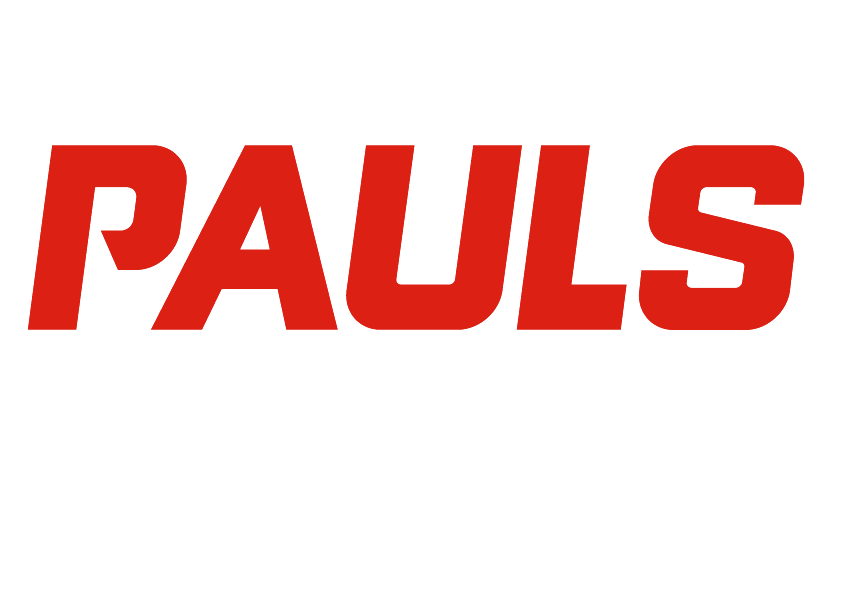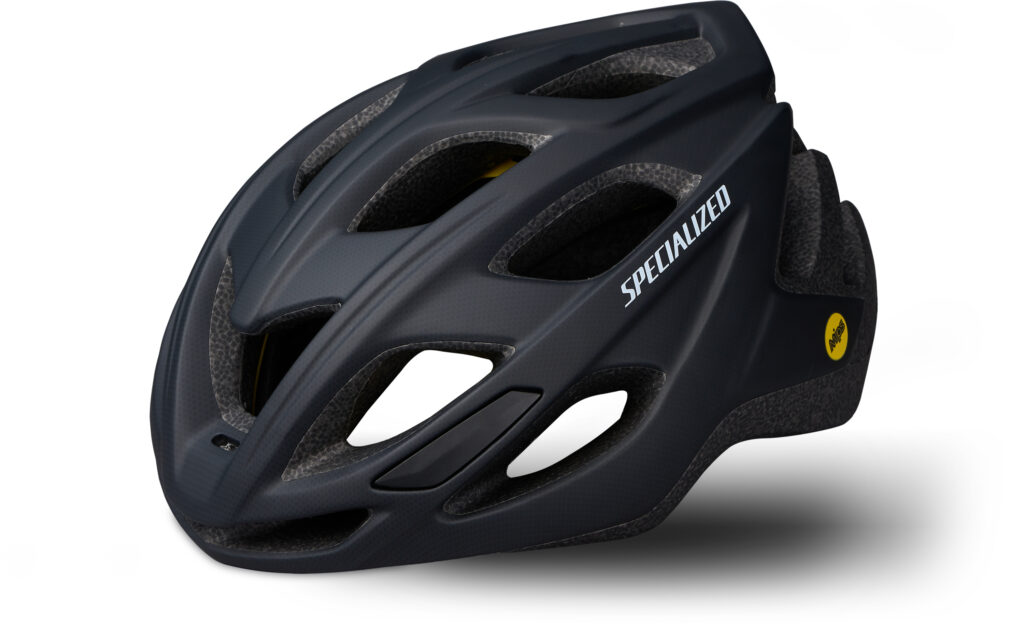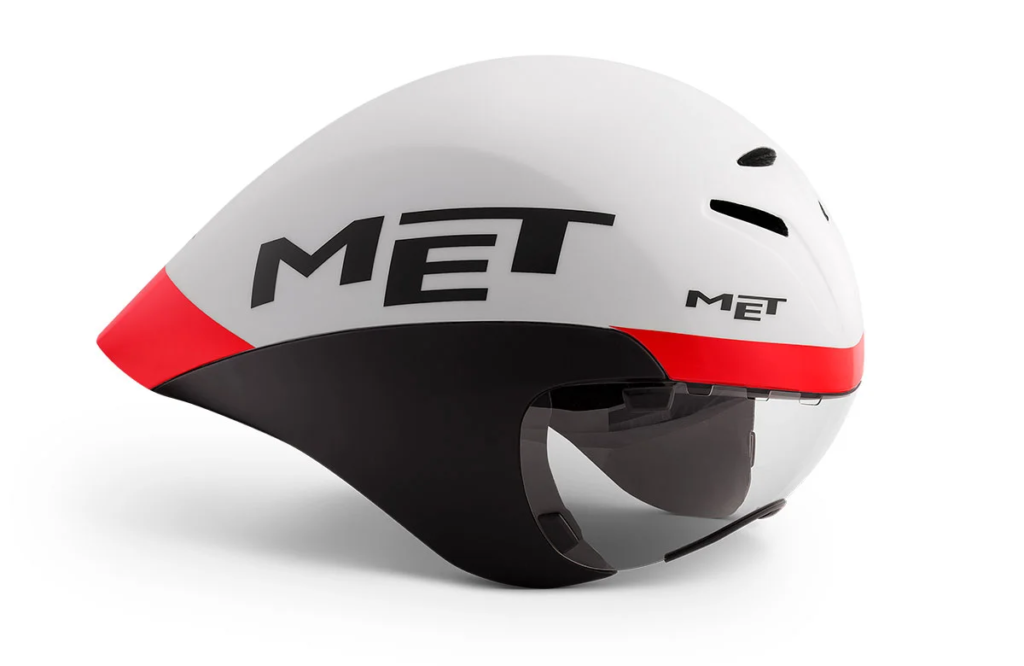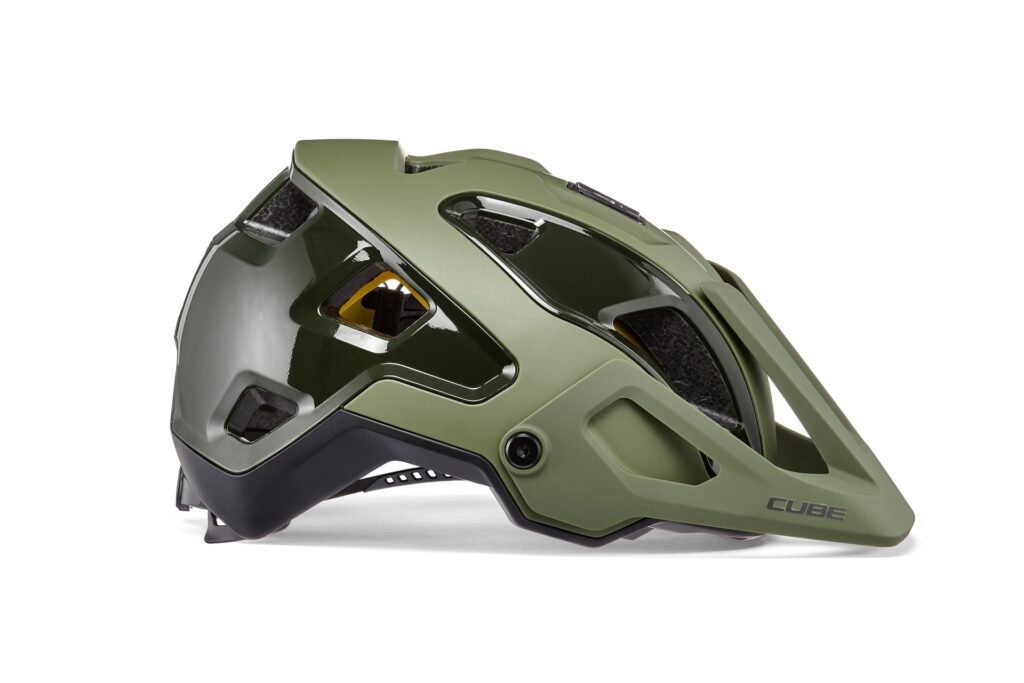Cycling is an enjoyable and healthy way to get around, but it’s important to ensure you’re doing it safely. One of the most critical safety measures for any cyclist is wearing a properly fitting, sturdy cycling helmet. Whilst not being a legal requirement in the UK, wearing a cycling helmet has been proven to significantly reduce the risk of suffering a serious injury. A study on cycling helmets and injuries published in the British Medical Journal found that cycle helmet use was associated with a reduction in mortality, severe traumatic brain injury (TBI), intensive care unit requirement, and neurosurgical intervention.
In this guide, we’ll take a closer look at cycling helmets, how to choose the right one, and what you need to know to stay safe while cycling.
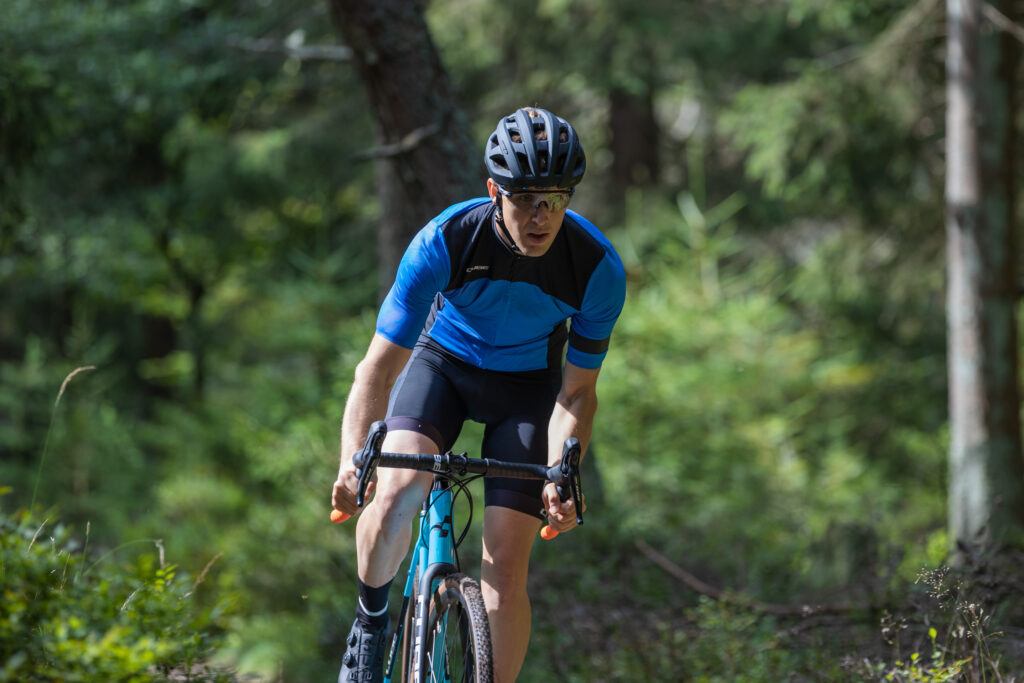
Knowing If Your Helmet is Safe
Before we dive into the different types of cycling helmets, it’s essential to know how to check if your helmet is safe. Look for a sticker on the inside of the helmet that indicates that it meets safety standards, such as those set by the European Committee for Standardization (EN), or equivalent.
How often you replace your helmet will depend on usage, however materials and the overall construction of the helmet are also significant factors. Some materials, such as polystyrene, will degrade over time, so it’s vital to understand what goes into your cycle helmet. It is generally recommended you replace your helmet every 3-5 years, even if you’re not involved in an accident. It’s crucial to replace your helmet if it has been involved in a crash or is damaged in any way, as it may be compromised from providing optimal protection.
What does MIPS mean?
MIPS stands for Multi-directional Impact Protection System, and is an independent technology designed by scientific and medical researchers to reduce the rotational forces that occur during a crash. Rotational forces can cause brain injuries, and MIPS technology helps to reduce the risk of such injuries by allowing the helmet to slide slightly on impact, absorbing the rotational energy. While not all helmets come with MIPS, many brands increasingly utilise this technology in not only cycling, but also snowsports, motorsports and equestrian sports helmets, so it’s worth considering when looking for increased safety.
MIPS can be recognised by the yellow liner within the helmet and a small yellow dot on the exterior of the helmet.
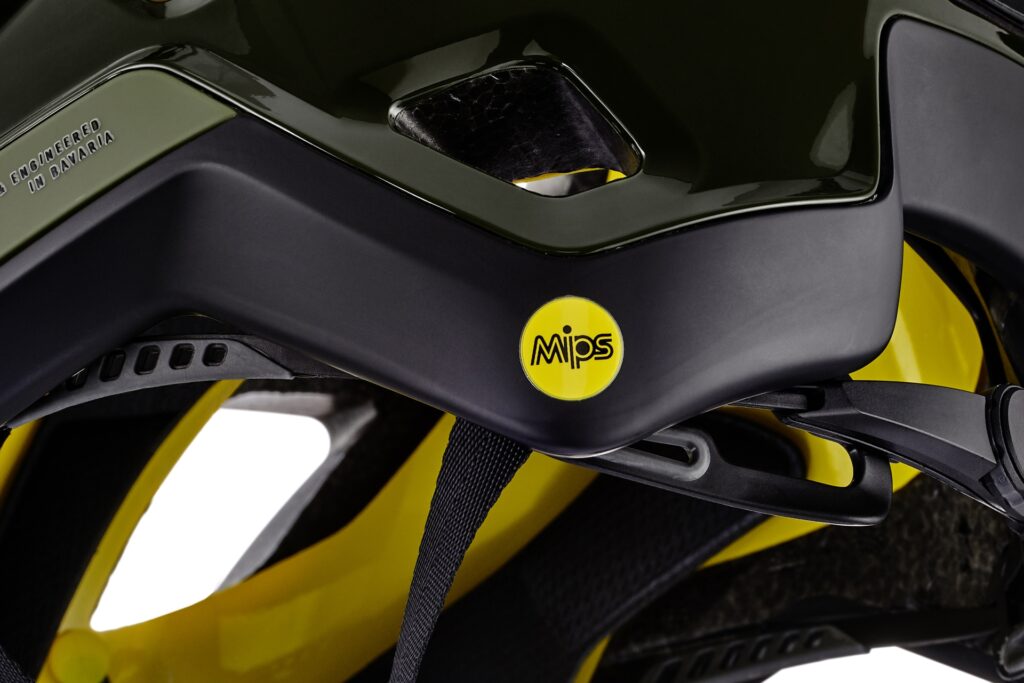
The Different Types of Cycling Helmets
There are several different types of bike helmets to choose from, each designed with specific cycling disciplines in mind.
Road Bike Helmets
Road bike helmets are designed for road cycling and often have an aerodynamic shape for improved speed. They’re lightweight and well-ventilated, making them comfortable to wear for long periods. The design typically features a smooth outer shell, a visor-less front, and plenty of ventilation ports to allow for maximum airflow.
Triathlon/Time-Trial Helmets
Triathlon/Time-Trial helmets are designed for speed and aerodynamics, making them best suited for road racing. They feature a sleek, teardrop-shaped design that reduces wind resistance and improves performance. The helmets often come with an extended tail that sits flush against the rider’s back, further reducing drag.
MTB helmet vs Road helmet: does it matter?
While a single helmet can be worn across multiple cycling disciplines, certain styles of riding may benefit from a more specifically designed helmet with features to suit their performance. Although some safety features are shared between road bike helmets and mountain bike helmets, they are designed to handle very different types of impact. However, exterior helmet design contributes less to injury prevention than safety features such as MIPS.
Mountain Bike Helmets
Mountain bike helmets are designed for off-road cycling and offer more protection around the back and sides of the head, making them generally safer for this style of riding. They’re typically larger and heavier than road bike helmets, with a rugged, durable design that can withstand the rigours of off-road riding. Mountain bike helmets typically come with a peak or visor to provide additional protection from sun, rain, and trail debris. Some mountain bike helmets also feature extended coverage at the back of the head for added safety. Mountain bike helmets are not recommended for road cycling, as the added weight and bulk can be uncomfortable for long rides, and their main function is not designed for aerodynamism.
Dirt bike helmet vs Mountain bike helmet
They look very similar – Dirt bike (or mx) helmets are designed for high-speed collisions and impact, surely that makes it safer than a downhill full-face mtb helmet? Well no, not exactly. Whilst that might seem like a reasonable assumption, there is more to consider when it comes to the differentiation between the two.
Rather than the exterior shell, the key protective element within a helmet is the interior cushioning. With motocross sports, the high-speed nature and potential impact type require a much more rigid, stiff cushioning to handle the impacts that may be incurred. Much like rigid suspension on a downhill bike, this design is not optimal for smaller (but still significant) impacts and bumps that are more likely in mountain biking. Bumps and jolts to the head that move the brain rapidly lead to a concussion. As such, less compliant cushioning and the additional weight of a dirt bike helmet is more likely to result in such injuries and others. With recent studies around NFL players suggesting that the long-term consequences of repeated concussions are greater than once considered, this simple swap has the potential to put you at an increased risk.
Commuter/Urban Helmets
Commuter/Urban helmets are designed for city riding, where comfort, style, and visibility are key. They’re lightweight and offer ample ventilation to keep the rider cool during commutes. The design often features a more casual, stylish appearance for urban riding than other helmet types, with a range of colours and finishes to choose from – however the safest commuter bike helmets will also include MIPS technology. Commuter helmets also often come with additional safety features such as integrated lights, reflective strips, and a visor for sun protection. Commuter/Urban helmets are not recommended for mountain biking or any off-road riding, as they offer minimal protection in the event of an impact.
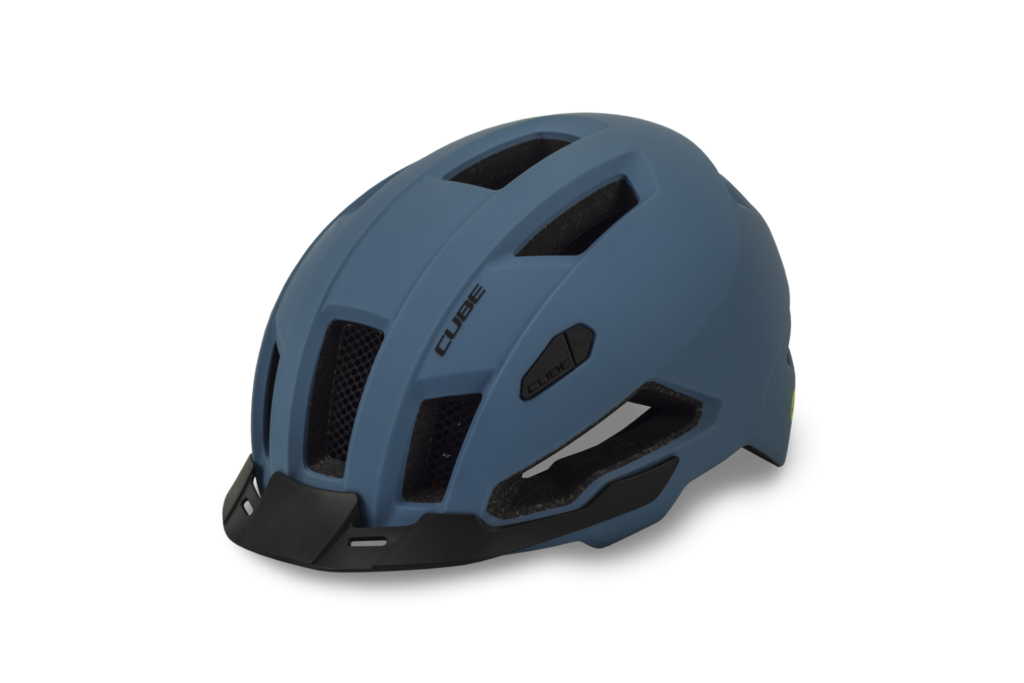
How to Get the Right Sized Helmet
No matter which type of helmet you choose, it’s crucial to get the right size. A properly fitting helmet is essential for maximum protection and comfort. To determine your helmet size, measure the circumference of your head just above your eyebrows and ears, then consult the manufacturer’s sizing chart. Try on helmets in person whenever possible, and make sure they fit snug without being too tight.
How much does a cycling helmet cost?
When it comes to purchasing a helmet, ensuring quality for value is key. In terms of price, helmets can vary widely based on the features they offer and the technology they use. Typically, road bike helmets tend to be more expensive since they are designed based on optimising both ride performance as well as function. While there are options at every price point, we recommend always selecting a helmet that feels sturdy, durable, and meets safety standards to provide adequate protection even on a limited budget. Bike helmet price is likely to increase with more features such as improved ventilation, lighter weight, and more advanced safety technology like MIPS, which can sometimes justify their higher price tag. It is important to remember that the price of a helmet should not be the only factor you consider when selecting the best option for your needs.
Key Factors to Consider When Choosing the Right Helmet
When choosing a cycling helmet, several key factors can influence your decision. Consider the following:
- Safety standards: Make sure the helmet meets bicycle helmet safety standards set by organisations like the CPSC, EN, or ASTM.
- MIPS technology: Consider helmets that feature MIPS technology for added protection against rotational forces.
- Fit and comfort: Make sure the helmet fits snugly and comfortably, and consider features like ventilation and padding.
- Helmet type: Choose a helmet designed for your specific cycling discipline, whether that’s road cycling, mountain biking, commuting, or racing.
- Style and appearance: While not the most critical factor, it’s essential to choose a helmet that you like and feel comfortable wearing.
Things to Consider for Kids’ Helmet
When it comes to choosing a helmet for a child, many of the same factors apply (with perhaps more emphasis on style!). Make sure the helmet fits properly and meets safety standards, with consideration for features like ventilation and padding. Additionally, look for helmets that are specifically designed for children, as these will provide better protection for smaller heads. Finally, make sure your child likes the helmet and is willing to wear it every time they ride.
Find your perfect cycling helmet with Paul’s Cycles
At Pauls Cycles, we offer a wide range of cycling helmets to suit every rider’s needs. Whether you’re a road cyclist, mountain biker, or commuter, we have a helmet that will keep you safe and comfortable on the road or trail. Browse our selection online or stop by our store and find the perfect helmet for your next ride. Stay safe out there!
